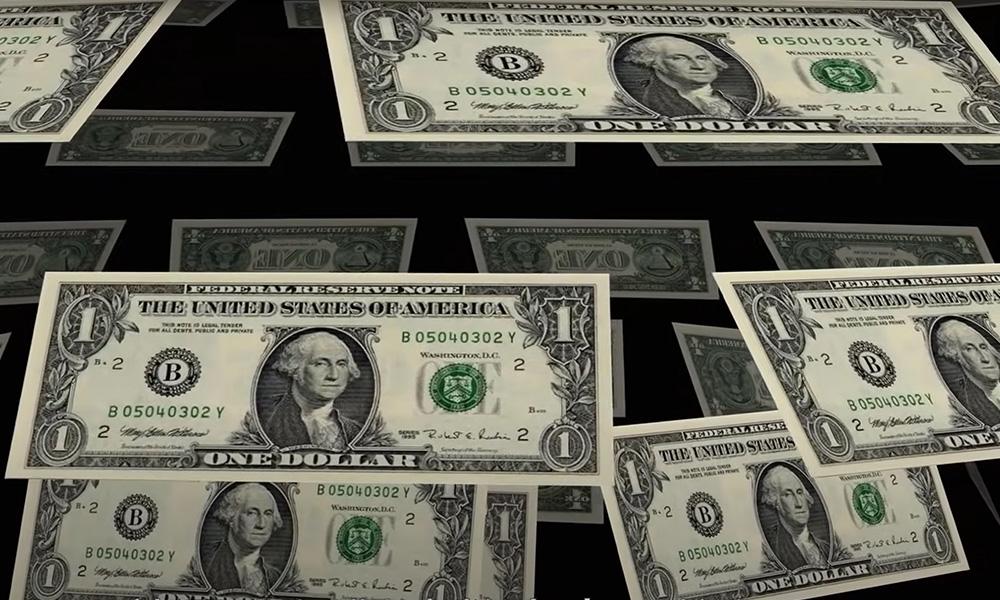Trump’s “Big and Beautiful” bill narrowly passed, what are its main contents?
2025-07-04 08:55:09

A victory for Republican unity: the bill narrowly passed
House of Representatives passes bill by narrow margin
On July 3, the U.S. House of Representatives passed Trump's tax cut and spending bill by a narrow margin of 218 to 214. This massive 869-page bill was passed by the Republican-majority House of Representatives and Senate with the slimmest of margins, which can be described as a politically tough battle. Despite the obvious divisions within the Republican Party, especially concerns about the cost of the bill and cuts in health insurance, some members even threatened to oppose it on the eve of the vote, but in the end only centrist Brian Fitzpatrick of Pennsylvania and conservative Thomas Massie of Kentucky voted against it. Massie believes that the bill is not strong enough in terms of spending cuts and fails to meet the core demands of conservatives.
A major victory for Trump
This is a significant political victory for Trump. The bill not only provides financial support for his plan to combat illegal immigration, but also makes the 2017 tax cuts permanent and adds several new tax incentives promised during his campaign. The White House announced that Trump will officially sign the bill into law at 5 p.m. local time on July 4, the Independence Day holiday. Republicans praised the legislation as "jet fuel" for economic development, and House Speaker Mike Johnson was even more optimistic, saying, "All boats are sailing." This metaphor highlights the Republicans' confidence in the bill's ability to stimulate economic growth.
Full analysis of the bill: the double-edged sword of tax cuts and spending
Tax reduction policy: benefiting all classes or only the rich?
One of the core contents of the bill is a substantial tax cut. According to the Congressional Budget Office (CBO), the bill will reduce tax revenue by $4.5 trillion over the next decade. Trump's 2017 personal and corporate tax cuts were originally due to expire at the end of this year, but now they have been made permanent, avoiding the pressure of tax increases faced by most Americans. In addition, the bill adds tax deductions for tip income, overtime pay, the elderly and auto loans, and expands tax benefits for parents and businesses. These measures are promoted by Republicans as universal policies that benefit all income groups, aiming to stimulate consumption and investment, thereby promoting economic growth.
However, Democrats have sharply criticized the tax cut plan. In his 8-hour and 46-minute marathon speech against the bill, House Democratic leader Hakeem Jeffries pointed out that the real beneficiaries of the bill are billionaires, while ordinary Americans will bear a heavy price. His speech set a record for the longest time in the history of the House of Representatives, fully demonstrating the Democrats' strong opposition to the bill.
Spending cuts: Medicare and green energy are casualties
The tax cuts are matched by substantial spending cuts. The bill is expected to cut $1.1 trillion in public spending, with the most controversial being the adjustment to the Medicaid health insurance program. Medicaid covers 71 million low-income Americans, and the bill is expected to cause nearly 12 million people to lose their health insurance by tightening enrollment standards, increasing work requirements, and cracking down on states' mechanisms to increase federal payments. This change has sparked strong dissatisfaction among Democrats and some members of the public, who believe it will seriously undermine the well-being of low-income groups.
In addition, the bill also cancels dozens of green energy incentives, including electric vehicle tax credits. This is not only a blow to the US clean energy industry, but also criticized as weakening the US competitiveness in the global green economy. The Electrification Coalition, an electric vehicle advocacy organization, warned that this decision could hand over the US's leading position in the future transportation sector to China.
Debt Ceiling Compromise
To avoid a debt default in the short term, the bill raises the U.S. debt ceiling by $5 trillion. However, the Congressional Budget Office predicts that the bill will increase U.S. debt by $3.4 trillion over the next decade, bringing the total debt to $39.6 trillion. Some investors worry that the continued rise in debt burdens may offset the economic stimulus effects of the bill and push up long-term borrowing costs.
End of electric vehicle tax credit: Industry faces new challenges
The end of the tax credit
As part of the bill, a $7,500 tax credit for buying or leasing a new electric car and a $4,000 credit for used electric cars will end on September 30. These policies have significantly boosted the growth of the electric vehicle market since they were implemented in 2008. However, the passage of the bill means that this support will come to an abrupt end in less than three months. Barclays auto analyst Dan Levy predicts that consumers may drive up electric vehicle sales in the short term due to "pre-purchase", but then the market will face a cliff-like decline.
Far-reaching impact on the electric vehicle industry
The cancellation of the electric vehicle tax credit not only affects the cost of car purchases for consumers, but also poses a challenge to US automakers and related supply chains. In recent years, the share of electric vehicles in the global market has continued to expand, and China has taken a leading position in this field. The Electrification Coalition criticized the bill for "handing over the US role in the future transportation sector to China", highlighting the potential threat of the policy shift to the US green economic strategy.
Summary: A future with both opportunities and challenges
Trump's "big and beautiful" bill is undoubtedly the focus of American politics in 2025. It provides strong financial support for Trump's domestic agenda through large-scale tax cuts and spending adjustments, and also fulfills many campaign promises. However, the high cost of the bill, cuts to medical insurance, and the impact on the green energy industry have triggered strong opposition from Democrats and some members of the public. The end of the electric vehicle tax credit has sounded the alarm for the US auto industry. Between the hope of economic growth and the contradiction between the debt burden and people's well-being, how the implementation of this bill will shape the future of the United States deserves continued attention.
Impact on the US dollar
The bill involves massive tax cuts (reducing revenue by $4.5 trillion over the next decade) and an increase in the debt ceiling (increasing by $5 trillion), which is expected to push up US debt to $39.6 trillion. This fiscal expansion may stimulate economic growth in the short term and enhance the appeal of the US dollar as investors may expect higher interest rates and economic vitality. However, in the long term, the increased debt burden may trigger market concerns about the sustainability of US fiscal policy, leading to pressure on the US dollar. In particular, if the Federal Reserve tightens monetary policy due to inflationary pressures, the US dollar may fluctuate further.
Impact on gold prices
Gold prices are usually negatively correlated with the trend of the US dollar. The fiscal expansion and debt increase of the bill may push up inflation expectations and weaken the purchasing power of the US dollar, thereby supporting the rise in gold prices. As a safe-haven asset, gold is often favored when there is a debt crisis or economic uncertainty. The current bill is expected to cause 12 million people to lose their health insurance and cut public spending, which may cause social dissatisfaction and economic uncertainty, further pushing up the safe-haven demand for gold. However, if the bill has a significant short-term stimulus effect and the market's expectations for the Fed's interest rate hikes heat up, the strengthening of the US dollar and high interest rates may temporarily suppress gold prices. Therefore, gold prices may fluctuate more in the short term, but in the medium and long term, debt problems and inflation expectations are more likely to benefit gold prices.
- Risk Warning and Disclaimer
- The market involves risk, and trading may not be suitable for all investors. This article is for reference only and does not constitute personal investment advice, nor does it take into account certain users’ specific investment objectives, financial situation, or other needs. Any investment decisions made based on this information are at your own risk.










